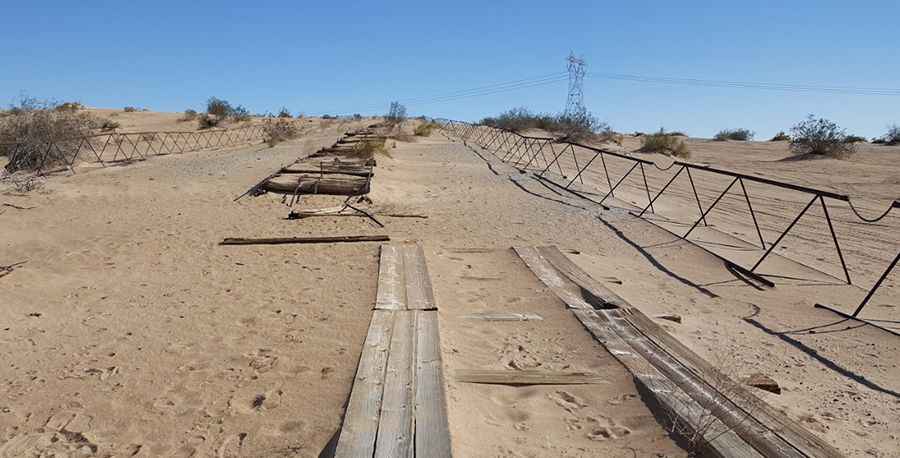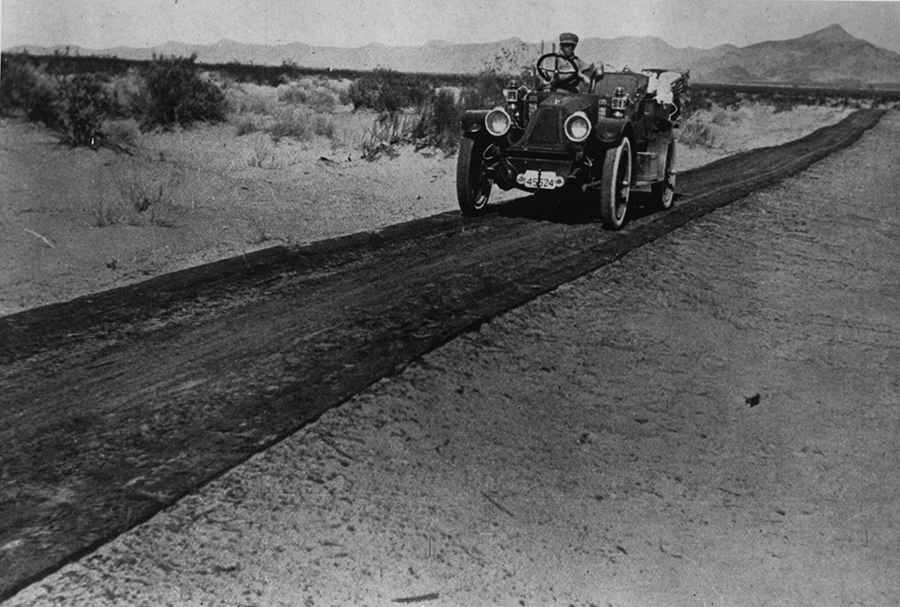The historic Old Plank Road in California was built in 1915
The Old Plank Road, also known as the Imperial Plank Road, was an innovative transportation project constructed in the early 20th century in Imperial County, in the US state of California. Built in 1915, the road ran through the Algodones Dunes, a large sand dune field.

What’s the Old Plank Road?
It was built to provide a stable road surface across the shifting sands of the Algodones Dunes, which posed a significant challenge for travelers and transportation at the time. The road consisted of wooden planks laid across the sand dunes, offering a smoother and more reliable route for automobiles and horse-drawn wagons. It was a one-lane road of wooden planks bound together and laid across the sand to make a primitive roadway across shifting sand dunes.
When was the Old Plank Road built?
Constructed in 1915, the Old Plank Road was a remarkable engineering feat of its time. However, its lifespan was relatively short-lived due to the harsh desert environment and the constant shifting of the sand dunes. By the late 1920s, the road had fallen into disrepair and was no longer suitable for use. The plank road took two months to build and was considered a success even though it needed constant maintenance to keep it clear of sand. Double sections were placed at intervals to permit vehicles to pass.
How long was the Old Plank Road?
Tucked away in the southeastern portion of California, near the Mexican border, the road was built in the early 20th century to help cars get across eight miles of sand of Imperial Sand Dunes on the way from San Diego (California) to Yuma (Arizona). It played a crucial role in connecting these two regions and facilitating transportation and trade between them. About 3000 vehicles a week traveled across the road that resembled railroad tracks for cars. Turnouts built every mile were added so cars could pass each other on the one-lane road. The road was constructed from planks seven feet long and resembled a railroad track but for autos only. Soon after the plank road was completed the California State Highway Commission took authority for the road and upgraded the route to an 8-foot wide wood roadbed. Turnouts were added about a mile apart in order to let the traffic flow in both directions. In early 1915 workers completed a crude road across the sands east of Grey’s Wells, with two parallel tracks, each 24 inches wide made from 3-inch-by-8-inch wooden planks. As the sand covered the road, a horse team was brought in and the sections were lifted and dusted off and laid back down and traffic resumed. Portions of the plank road were moved by teams of mules when shifting sand made such corrections necessary. The plank road opened for the first time a direct route for drivers traveling between San Diego and Arizona.

Historical image of vehicle traveling on Plank Road. Photo by BLM.
The Old Plank Road today
The plank road -- the original Route 80 -- lasted for a dozen years until it was replaced by an asphalt road and today's four-lane highway. The first road across the Algodones Sand Dunes was built with funding by Ed Fletcher of San Diego. Today, only fragments of the Plank Road remain. This plank road allowed a direct route through an ever change landscape. Today, remnants of the Old Plank Road can still be found in the Algodones Dunes, serving as a reminder of early efforts to overcome the challenges of desert travel in California's Imperial Valley. The site is also recognized as a historic landmark, commemorating the ingenuity of those who built and maintained the plank road.
Where was 1983's Return of the Jedi filmed?
The region of towering dunes resembles the Sahara desert and has been featured in films ranging from Rudolph Valentino's “The Sheik” to 1983's “Return of the Jedi”.
Pic: Howard Klum